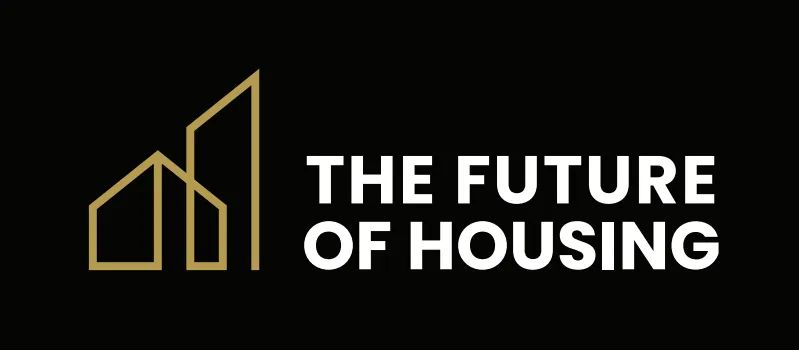COLLABORATE. INNOVATE. TRANSFORM.
The Future of Housing is redefining how we think about urban and rural living by addressing the urgent need for sustainable, attainable, and future-ready homes.
As a catalyst for change, we bring together industry, academia, and technology to accelerate new models of design and construction—delivering housing that is faster to build, smarter to live in, and better for the planet.
Our mission is to move beyond traditional construction by fostering collaboration among innovators, thought leaders, and stakeholders worldwide. Together, we are building a scalable, climate-resilient approach that transforms how communities grow and thrive.
The Future of Housing is a non-profit initiative driving a bold new approach to how homes are imagined, designed, and built. We exist to confront the housing crisis not with incremental change, but with transformative solutions that combine advanced manufacturing, sustainable materials, and smart technologies.
At the heart of this movement is the Future of Housing Consortium (FOHC)—a collaboration of innovators from construction, technology, manufacturing, and academia. Together, we are pioneering Quick Response Manufacturing (QRM) for housing: a system that accelerates delivery timelines by up to 70% compared to traditional methods while ensuring homes are climate-resilient, energy-efficient, and accessible.
Our vision is to:
-Catalyze innovation by bringing together thought leaders, industry experts, and community voices.
-Redefine housing as adaptable, sustainable, and scalable—solutions built for today and ready for tomorrow.
-Build capacity for the future by fostering a new generation of skilled talent through partnerships with leading research institutions.
The Future of Housing is more than a concept—it’s a collaborative platform for change. By challenging outdated approaches and showcasing what’s possible, we are setting the stage for a future where housing is not only attainable, but a cornerstone of healthier, smarter, and more resilient communities.



This Prefab Startup Is Saving America’s Urban Centers One Floor At A Time
As vacancies rise in urban office buildings and new residential openings continue at a snail’s pace, the real estate world needs a bold new strategy to revitalize downtowns while preserving their unique heritage.
That’s where Arthroto comes in. As municipalities begin to reckon with the future of their downtowns, Arthroto is bringing the latest techniques and technologies under a single roof to create an efficient prefabrication solution that will enable builders to convert existing buildings at scale. TRD spoke with Arthroto President and Founder Doug Hayden as well as the company’s COO and Co-Founder Spencer Marks about how they’re gauging various cities’ readiness for conversion; then we caught up with some of Arthroto’s partners, including President and CEO at ZS2 Technologies Ltd. Scott Jenkins, Centre for Innovation and Research in Advanced Manufacturing and Materials Chair Hamid Rajani, and Vice President at Lessard Design Inc. Chris Boone, to get their take on the company’s approach to redeveloping our cities for the future.
Learning from Calgary
One of the major barriers to converting unused office space to much-needed residential stock is the cities themselves. Last time we spoke with Arthroto, Hayden praised Calgary’s conversion program for being both forward-thinking and simple. In fact, the program was so successful that it had to be suspended. But Arthroto learned something else when looking at the Calgary program.
“One of the things the city found was that building owners who got into the program years ago have done nothing,” explains Hayden. “So they’re basically blocking time and money.”
It’s easy to say you’re going to convert your unused office space to residential when there’s an incentive on the line, but actually doing it quickly and correctly is another matter. Arthroto’s prefabricated solution is designed to solve this by reducing the reliance on local labor and allowing piecemeal conversion of individual floors, empowering building owners to take advantage of incentive programs in a timely fashion.
The Urban Readiness Rating
While Calgary was the leader in municipal incentives for conversion, other cities across North America are following suit, and Arthroto has developed a rating system to give developers and property owners an idea about how their city stacks up.
“We call it an Urban Readiness Rating Score,” says Marks. “It identifies the appetite for adaptive reuse in a city, specifically tailored toward office to residential.” The parameters used to create the score include the amount of distressed assets, the size of those assets, the demand for housing, the cost of construction, labor availability, and the degree to which the municipality itself is supporting conversion.
“The score is designed to tell you how much real estate is available, whether it can financially support a change, and then give a risk assessment based on both the municipality and the availability of labor,” says Marks. “And what’s unique about our solution is that it mitigates the lack of labor availability, because it requires less onsite skilled labor.”
According to Arthroto’s scoring system, Washington DC is leading the charge when it comes to municipal support for adaptive reuse in the states. Dubbed colloquially as “office to anything,” DC is opening up its office-to-residential tax abatement to other conversions, including hotels and retail. The idea is that, with office overstocked and many conversions requiring significant incentives to pencil, every little bit helps.
“They’ve identified that no one is coming back to that B- and C-class office space,” says Hayden. “So they’re saying, ‘We’re open to zoning changes.’”
Preserving Downtowns With Prefab Conversion
As Arthroto’s teams travel the continent investigating the many urban cores in need of the firm’s adaptive reuse solutions, one repeating theme is local’s love of their historic downtowns and an overwhelming desire to preserve existing structures rather than tear them down. But there’s more to these old buildings than nostalgia.
“These older buildings are just more durable,” says Marks. “If they were built 30 or 40 years ago, we had rougher estimates, so civil engineers overbuilt everything.”
Not only do these older buildings often have unique architectural styles that give downtowns their identities, but they’re also even better suited for conversion than newer, glassy towers. For example, because they were over-engineered, these buildings can often support additional floors being added, opening up additional floor space without having to demolish historical treasures via wasteful reconstruction.
What Arthroto brings to the table is the ability for these buildings to be converted piecemeal, allowing existing tenants to remain in place while vacant floors are revitalized.
“There’s a distinct advantage to having this flexibility with an existing building,” says Boone, an office-to-residential conversion expert. “You’re able to come in and treat the building conversion not as adaptive reuse but as a series of residential fitouts.”
High-Tech Solutions and Innovative Approaches to Old Problems
While Arthroto works to identify cities ripe for office to residential conversion, they’re also partnering with experts who are pioneering the next generation of construction techniques and technologies. Last time we covered Arthroto, we spoke with Benjamin Urban of prefab firm DIRTT to learn how the prefabrication process is revolutionizing construction on the ground. This time, we dug into the groundbreaking production methods and next-generation materials that are helping Arthroto convert unused office to residential space in an efficient and environmentally responsible manner.
“The absence of novel technologies could be a problem for the future of construction,” explains Rajani, whose work focuses on research and innovation in advanced manufacturing and materials science. In an industry that often relies on century-old techniques, adopting advanced tech like robotics to build prefab components is what Rajani calls “low-hanging fruit.”
Rajani also emphasizes that prefab is “a great place for testing new materials,” including ZS2’s TechBoard. The fire-resistant, economical, and environmentally-sustainable construction material is a magnesium cement board inspired by some of the oldest cement in the world, yet leverages a cutting-edge sourcing technology that makes it a truly 21st Century creation.
“Magnesium cement is the mortar in the Great Wall of China,” says Jenkins. “But magnesium oxide is not readily available in the world.” ZS2’s chemical engineers pioneered a process for sourcing the rare material from magnesium-rich brine, a waste product generated all around North America. TechBoard is just one of the cutting-edge materials that Arthroto is integrating into its prefab offerings, reducing the carbon footprint and labor requirements of any given conversion even further.
Reinventing The Future of Construction
The question remains, with all of the technologies and materials available today, why are we still building the same way we did 100 years ago? Arthroto’s commitment to pioneering innovation in adaptive reuse is not only reshaping the way we build, but also redefining the future of sustainable living. By harnessing new methodologies, materials and technologies, the company is leading the charge towards a more efficient and environmentally conscious construction industry.
With their emphasis on fully factory-built interiors, Arthroto is creating a new vision for urban development that prioritizes quality, efficiency and long-term sustainability. As they continue to push boundaries and challenge norms, Arthroto’s mantra, “It’s the Future,” serves as a powerful testament to their unwavering dedication to building a better tomorrow.


